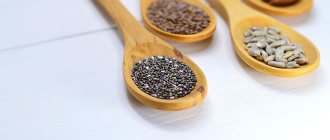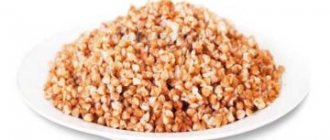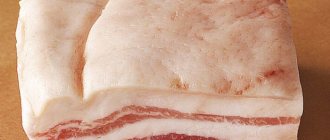Arugula, an exotic herb with a tart, nutty taste, has recently gained great popularity. It meets all the rules of a healthy diet, as it has a large range of useful substances. It remains to be seen whether women can use it during breastfeeding.
Useful qualities when feeding
When breastfeeding, nursing women care about the quality of milk and the impact of their diet on the health of their newborn baby. Arugula will help enrich milk with nutrients, because it contains many useful substances. The table shows only a few of them.
| Useful substance | Effect on the body |
| Vitamin C | Strengthens immune defense. |
| Vitamin K | Normalizes blood clotting. |
| Vitamin A | Improves metabolic processes, participates in the formation of bone tissue and tooth enamel. Promotes good vision. Needed to strengthen the immune system. |
| B vitamins | Helps the functioning of the nervous system, stimulates brain function, normalizes muscle tone of the digestive system (this reduces constipation), and improves mood. |
Healthy green leaves of the cruciferous family help produce milk, which is very useful for poor lactation. Iodine, which is also contained in the composition, plays a big role in the prevention of thyroid diseases.
Arugula helps the digestive system normalize its functioning and better digest heavy foods. It prevents the formation of constipation, which greatly affects nursing women. Its regular use will help you lose weight and lower blood cholesterol levels.
An exotic plant from the shores of the Mediterranean Sea contains many lipids. They improve blood composition and prevent the formation of blood clots. This is an excellent prevention of heart attacks and strokes.
The use of arugula for peptic ulcers is recognized in folk medicine and official medicine has approved. It can reduce the size of ulcerative lesions of the mucous membrane of the stomach and duodenum.
Arugula will help fight anemia and endocrine diseases, since the iron and iodine in its leaves are in an easily digestible form. Such pathologies are possible in women after childbirth. It is better to carry out prevention with food rather than drugs. Also, arugula, with its diuretic properties, will reduce swelling.
Arugula: benefits, uniqueness and value of the plant
Not everyone knows that for a very long time arugula was considered the most common weed, and only Europe was able to recognize its unique taste qualities in it and rightfully assign the title of “delicacy”. Europeans liked its delicate nutty and creamy flavor and therefore this plant became a real value, spice and variety for the ordinary table.
The seeds of this plant are distinguished by the fact that they contain a unique amount of useful substances, namely:
- essential oil
- organic oleic acid
- linoleic acid
- erucic acid
- alkaloids
- flavonoids
- vitamin PP
- vitamin A
- all B vitamins
- vitamin K
- choline
- ascorbic acid
- Vitamin E
- sodium
- iron
- phosphorus
- potassium
- magnesium
- calcium
- copper
- manganese
- zinc
- selenium
beneficial properties of arugula
For its high content of nutrients, low energy value, minimal content of carbohydrates and fats, this plant is considered to be a dietary product. It contains a good supply of fiber, which normalizes digestion. The calorie content of arugula is only 25 kcal per hundred grams of product and therefore there are no specific restrictions on its consumption.
There is one very important tip for eating arugula, since it contains iron; you should never cut it with a knife to prevent oxidation. Arugula should be torn by hand and added to dishes or in salads.
Unfortunately, arugula is a perishable product and the longer it is cut in a salad, in a dish or simply in the refrigerator, the more useful and nutritious substances come out of it. If arugula is not eaten for a long time, it not only loses all its qualities, but also begins to secrete a kind of juice that can turn the leaves into limp greens and even mush.
Possible harm to the plant
But not everyone can use such a valuable and nutritious plant for food. Some people are intolerant to this product because it contains strong essential oils. The use of arugula is contraindicated for people with the following diseases:
- allergy to essential oils of this plant;
- urolithiasis disease;
- gastritis of the stomach with high acidity;
- kidney and liver diseases.
The use of arugula is contraindicated if you have a blood clotting disorder. The plant contains a large amount of vitamin K, which reduces blood clotting; this should be taken into account by those who use medications with a similar effect.
It is not recommended to eat arugula grown in polluted areas. It can cause poisoning, which is especially dangerous during breastfeeding. To avoid such troubles, you need to buy greens only from trusted manufacturers; they value their reputation.
What vitamins does arugula contain?
As mentioned earlier, arugula contains many vitamins:
- vitamin A
- B vitamins
- vitamin C
- vitamin K
- vitamin E
- vitamin PP
Eating arugula has a beneficial effect on metabolism in the body. A good metabolism, in turn, affects the loss of excess weight, which means that arugula can be called a “faithful assistant” in the fight for a slim figure.
The protein that is found in this plant favorably burns fats that enter the human body along with food. Fiber, of which there is a sufficient amount in arugula, effectively “cleanses” the intestines of accumulated toxins and waste. It is for this reason that salads with arugula are recommended to be consumed during a rich and satisfying meal, in order to digest food faster and better, and also to prevent you from gaining excess weight.
arugula is a source of fiber
The fiber in arugula gives a person a feeling of fullness and prevents overeating. While satiated, it is also a source of energy, unlike other leafy greens. Arugula is capable of removing excess cholesterol from the body with its rich supply of nutrients, which makes a person healthier and makes him feel better.
Another useful property of arugula is that it can increase the level of hemoglobin in the blood, as well as enrich the body with iodine. Arugula is often eaten by pregnant women and nursing mothers because it can also influence a good flow of milk.
How to introduce it into the diet when feeding a child?
Arugula is introduced into the diet of a nursing mother 3-4 months after the birth of the baby. The leaves contain a lot of fiber; you need to wait until the baby’s digestive system is ready for absorption. All members of the cruciferous family can cause increased gas formation.
Mom introduces arugula into her menu gradually, a few leaves at a time, observing the baby’s behavior and reaction. If the child does not experience discomfort in the tummy (bloating, increased formation of gases) or skin rash, then at the next meal you can eat 100 g of this greenery. If symptoms of intolerance to a new product appear, you need to exclude it from your mother’s diet.
Can children eat arugula?
Arugula is one of the safest foods for baby food. This plant is often included in children's menus. You can use it to make not only salad, but even pies and delicious pies. It is recommended to introduce arugula a little into the baby’s diet starting from six months for those who are bottle-fed and from one year for those who are breastfed.
You should not introduce arugula into complementary foods too early because it can cause bloating and excessive gas formation.
Can arugula be given to children?
How to choose arugula in the store?
For women during breastfeeding, the freshness of food is very important. Her digestion and the digestion of food by the baby depend on this. You need to select greens especially carefully. Many hazardous chemicals can accumulate in it.
Manufacturers use various prohibited methods to keep green leaves in good condition for a long time. You should not buy greens for a pregnant or lactating woman in the markets. It is better to do this in stores where sellers are responsible for the safety of products; they can be formally filed with claims.
The healthiest thing will be arugula bought in the summer, when it grows naturally in the countries of southern Europe, on the shores of the Mediterranean Sea. In winter and spring, the plant goes on sale from greenhouses. They use a large amount of fertilizers, which are not beneficial for mother and baby.
When choosing arugula you need to pay attention to the leaves. They should be completely green; limp ones are not suitable for a nursing woman. The size of the leaf affects the taste - small ones are more bitter, you need to remember this when choosing, focus on your taste habits.
What are the benefits of arugula for men?
This spicy salad has a good composition of useful microelements: minerals, vitamins, acids. Arugula contains a lot of zinc - an extremely useful microelement that has a beneficial effect on men's health. It is often called a real “aphrodisiac”.
By its action, arugula can relieve men from sexual dysfunction. There are even several recipes that recommend mixing this spicy herb with honey and black pepper. This mixture should be consumed in small quantities daily.
arugula for men's health
Recipes using arugula?
Cooking arugula has its own characteristics. Its greens have so much iron that they prefer not to cut them with a metal knife to avoid oxidation. This amazing herb should be picked by hand and added to salads and other dishes last.
There is no need to heat-treat arugula, as this will result in the loss of beneficial substances and the unique taste and aroma.
Salad "Rucola with cottage cheese"
Components:
- fresh zucchini;
- cottage cheese;
- hard cheese;
- arugula leaves:
- olive oil.
Peel the zucchini and cut into cubes. Add grated cheese and mashed cottage cheese. Arugula leaves are torn by hand. In a separate bowl, mix olive oil and salt (a small amount). If possible, add a few drops of lemon juice. Add butter to the mixture. A tasty and healthy salad is ready.
Some tips:
- It is better to take a certain variety of zucchini - with green skin. Its pulp is soft and does not cause an allergic reaction.
- You need to determine the fat content of cottage cheese yourself. If there is no constipation, then you can eat a fatty product. Calcium is poorly absorbed from low-fat cottage cheese.
- You can add boiled chicken breast to this salad.
Layered salad “Rucola with apples”
Components:
- green apples;
- boiled chicken breast;
- quail eggs;
- hard cheese;
- natural yogurt.
The meat is cut into cubes, laid out as the first layer, brushed with yogurt, followed by cubes of boiled eggs, also flavored with yogurt. Green apples need to be peeled, grated on a coarse grater, placed in a layer under the yogurt, sprinkled with finely grated cheese on top, without watering it.
Layers can be changed at your discretion. It turns out to be a beautiful, very filling, healthy salad. It is worth trying it without adding salt or other seasonings; it has an extraordinary taste. If it is difficult to give up salt, then you can salt the chicken breast during the cooking process, this will be enough.
There is no need to perceive breastfeeding as a time of monotonous nutrition. You can show your imagination and come up with many interesting, healthy dishes. They will be tasty, nutritious, and will cheer up a nursing mother.
Contraindications for eating arugula
Nutritionists often advise consuming arugula in large quantities in order to successfully fight excess weight. However, there are certain contraindications for its use, both for its use and for its preparation. There are no strict and categorical prohibitions, but some people need to eat it with caution.
Contraindications for arugula are based only on the individual intolerance of this spicy salad for each individual person.
contraindications for the use of arugula
When consuming arugula, people who have:
- severe allergic reaction to plant products
- people with urolithiasis
To rule out the fact that you may have an intolerance to the product, you should initially try one or two leaves of arugula and check your reaction to it. If you feel good, you can use it without restrictions.
Keep in mind that this plant should never be subjected to strong heat treatment, in which case it loses not only its beneficial qualities, but also its taste.
Arugula for weight loss, benefits of arugula for weight loss
Arugula can be successfully used to easily cope with the problem of excess weight. The principle of action of this plant is very simple:
- qualitatively cleanse the intestines of accumulated toxins
- launch active metabolism in the body, helping to break down all microelements
- gives a feeling of fullness and prevents overeating
- fiber in arugula gives a person the necessary amount of energy
- has a good diuretic effect on the body, removing excess water from the body
Arugula improves the functioning of the gastrointestinal tract, helping to break down even the heaviest and fatty foods. It is recommended to serve meat, fish and other products on a bed of arugula so that the food is better absorbed.
arugula in dietary nutrition
How to eat arugula? How to cook arugula correctly?
In addition to purchasing arugula, you also need to eat it properly. The taste of arugula is very unusual; this herb has a slightly spicy, slightly mustardy, even slightly creamy and nutty taste. For some it may seem sharp, for others spicy, for others bitter. It all depends on how young the grass is and what its variety is.
Arugula can enhance the taste of any lean meat, fish and other ingredients. Arugula is often added to vegetable salad to give it a variety of flavors. Lettuce leaves must be torn with your hands before adding to the salad, because the blade of a knife can oxidize it. It is important to remember that arugula should only be consumed fresh and not subjected to too much heat treatment.
how to eat arugula?
The use of arugula in cosmetology and cooking
This leafy green is very often used in treatments to treat many problems not only with health, but also with appearance. For example, arugula should be consumed by those people who often experience brittle hair and nails. Arugula saturates the body with vitamins and replenishes lost supplies of microelements.
Regular consumption of arugula will allow you to have a strong nail plate, healthy shiny hair, and get rid of dry skin on your head for a long time.
use of arugula
In cosmetology, the oil of this plant is successfully used in order to:
- prevent hair loss
- eliminate dry hair ends
- make hair shiny and healthy
- get rid of freckles
- reduce corns and calluses
Particularly effective are a variety of cosmetic hair masks based on oil obtained from arugula leaves.
arugula in cooking
Arugula has found its place in cooking and is often an excellent addition to various dishes, as well as their main ingredient. Arugula is often found in authentic Italian cuisine. It is often added to dishes such as:
- vegetable risotto
- pizza
- fresh salads with meat, seafood or vegetables
- stews
- baked dishes
- bruschetta
- sandwich
- sandwich
- omelet, scrambled eggs
It is not uncommon for arugula to serve as the basis for preparing various sauces for fish and meat dishes. This sauce highlights the dish and enhances its taste.











